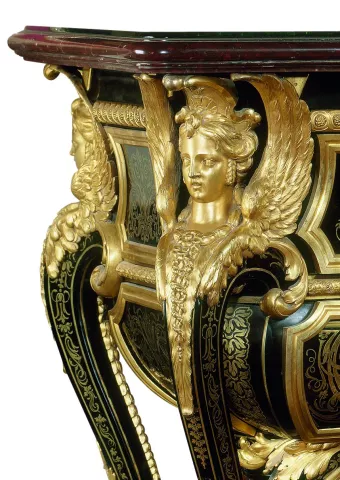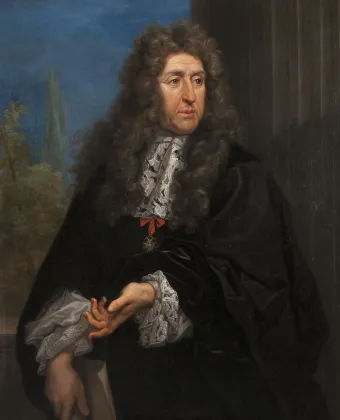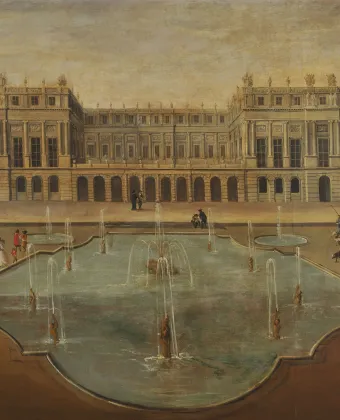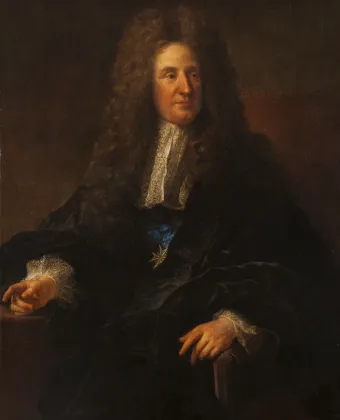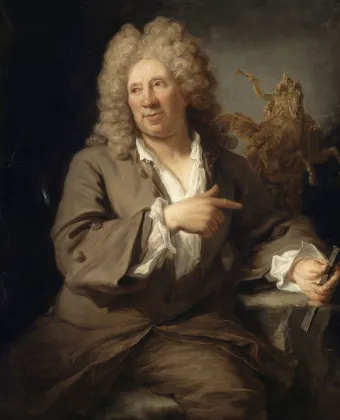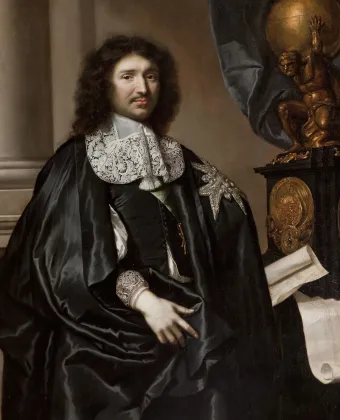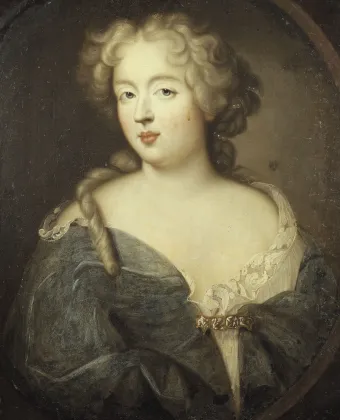Boulle began making different pieces of furniture for Louis XIV, his family and the Court in 1672, and is famous for the marquetry technique in copper and tortoiseshell named after him: the renowned “Boulle marquetry”. Although he didn’t invent the technique, he did perfect it. It consists in cutting a single design from both materials, enabling the artist to obtain two panels known as the “part” and the “counterpart”. The first is in copper against a tortoiseshell background, while the latter is in tortoiseshell against a copper background. In 1684-1692, the Grand Dauphin commissioned the panelling and parquet floor of his cabinet in Versailles in Boulle marquetry. Unfortunately, they were lost during the 18th century.
Another major innovation by Boulle was the use of bronze in his furniture to protect the most fragile parts. Console tables, bureaus and cabinets were adorned with mascarons, claws, friezes, foliage, etc. Bronze was also used in clocks, decorative borders, candelabras, inkpots and so on.
The cabinetmaker did not only use innovative techniques and aesthetics, but also created new types of furniture.
Anecdote
For Louis XIV’s bedchamber in 1708 in Trianon, he made a revolutionary type of commode. The king’s two commodes, currently on display in Versailles, wonderfully summarise Boulle’s work: originality in purpose and form, marquetry in copper and tortoiseshell and a large amount of bronze work.
They are, moreover, the rare pieces of furniture among his numerous creations which have been identified. Boulle also made large flat bureaus on legs, lounge tables, jewellery cases, monumental pendulum clocks and other pieces for the king.
The beauty and perfection of his furniture earned him a great reputation in France and across Europe and a prestigious clientele that included King Philip V of Spain and Maximilian-Emanuel of Bavaria. Paradoxically, Boulle was often in financial difficulty, and the king had to intervene on several occasions to protect him from his creditors. Although the artist’s work went out of fashion after his death in 1732, his furniture was reproduced and became popular again in the middle of the 18th century, and especially during the Second Empire.



